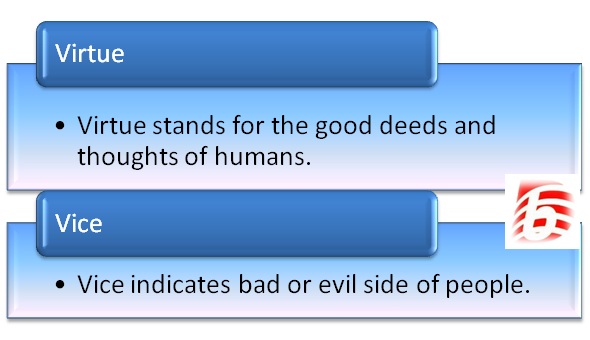Virtue vs Vice
This article explains the meanings of virtue and vice, as well as the key differences between them. Both terms relate to human behavior, with virtue representing the good aspects of human character and vice representing the bad or evil aspects. Virtues and vices can be seen in humans, and they are not innate characteristics. As a person grows older, they cultivate both virtues and vices according to their desires. Therefore, a person does not become virtuous by birth, but their actions determine whether they are good or bad.
Key Takeaways
- Virtue represents good deeds and thoughts, while vice indicates the bad or evil side of people.
- Both virtues and vices are acquired qualities, meaning a person has a choice in selecting one over the other.
- A person’s character and morality can be demonstrated through their virtues and vices, which determine their conduct.
What is Virtue?
Virtue can be defined as a behavior or attitude that shows high moral standards. In simple terms, we can identify virtues as good deeds and thoughts. Love, compassion, kindness, charity, courage, loyalty, justice, etc. are some examples of virtues. It is said that virtues bring happiness and goodness to the heart and are seen as useful and attractive qualities in a person. Virtues, or “good” qualities, are the means for happiness. When we do a good deed, it brings solace to the mind. Virtues make it easier for people to live in a community together since everybody shares values that carry a sense of moral responsibilities.
Moreover, the word virtue can also mean an advantage. For example, in the sentence “They saw no virtue in going to the meeting,” the meaning of the sentence is that they did not see any benefit in going to the meeting. Likewise, virtue stands for the goodness in a person’s character, and they are acquired qualities. One can measure a person’s character by their behavior, and virtues make one’s behavior faultless.
What is Vice?
Vice is the opposite of virtue. Vice represents the bad or immoral behavior or thoughts of a person. These are also acquired qualities. A person becomes wicked or evil due to their cultivated values, which make them a deviant in society. Virtues are generally seen as assets in one’s life, while vices are seen as deficiencies. That means, if a person possesses good qualities, those qualities add great moral value to them. In contrast, if a person cultivates bad qualities in their character, those qualities bring dishonor or rejection in society. Cruelty, unkindness, greed, vindictiveness, and malice are some examples of vices. When the majority in a community are immoral and evil, it makes the lives of citizens uneasy and unhappy. There may not be integrity and peace in that society.
What is the difference between Virtue and Vice?
- Virtue represents the good deeds and thoughts of humans, while vice indicates the bad or evil side of people.
- Both virtues and vices are acquired qualities, so a person can choose one over the other.
- An evil person can later become virtuous by cultivating good qualities, and vice versa.
- Virtue brings pleasure, while vice brings sadness in one’s life. Each virtue has its opposing vice.
- Both demonstrate a person’s character and morality, through which we can determine their conduct.
In conclusion, it is evident that a person always has a choice, and everything depends on the choices they make. All communities and religions encourage virtues over vices, and virtues always reward people, while vices are refused by all.
